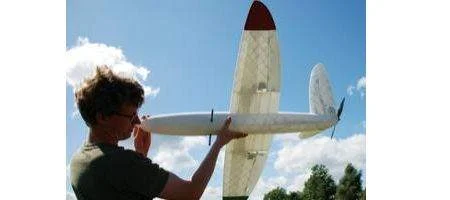British engineers have created and flown an aircraft whose entire structure has been printed – wings, integral control surfaces, access hatches and all.

The SULSA (Southampton University Laser Sintered Aircraft) unmanned air vehicle (UAV) was printed on an EOS EOSINT P730 nylon laser sintering machine, which builds plastic or metal objects layer by layer.
It was put together in minutes, says the tam – fasteners were used and all equipment was attached using ‘snap fit’ techniques.
The electric vehicle has a two-meter wingspan, a miniature autopilot and a top speed of nearly 100 miles per hour.
“The flexibility of the laser sintering process allows the design team to re-visit historical techniques and ideas that would have been prohibitively expensive using conventional manufacturing. One of these ideas involves the use of a Geodetic structure,” says University of Southampton professor Jim Scanlon.
“This type of structure was initially developed by Barnes Wallis and famously used on the Vickers Wellington bomber which first flew in 1936. This form of structure is very stiff and lightweight, but very complex. If it was manufactured conventionally it would require a large number of individually tailored parts that would have to be bonded or fastened at great expense.”
Another design benefit, says the team, is that laser sintering allows the use of an elliptical wing planform – long known to offer drag benefits.
“Again, laser sintering removes the manufacturing constraint associated with shape complexity and in the SULSA aircraft there is no cost penalty in using an elliptical shape,” says professor Andy Keane.






